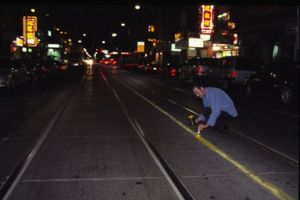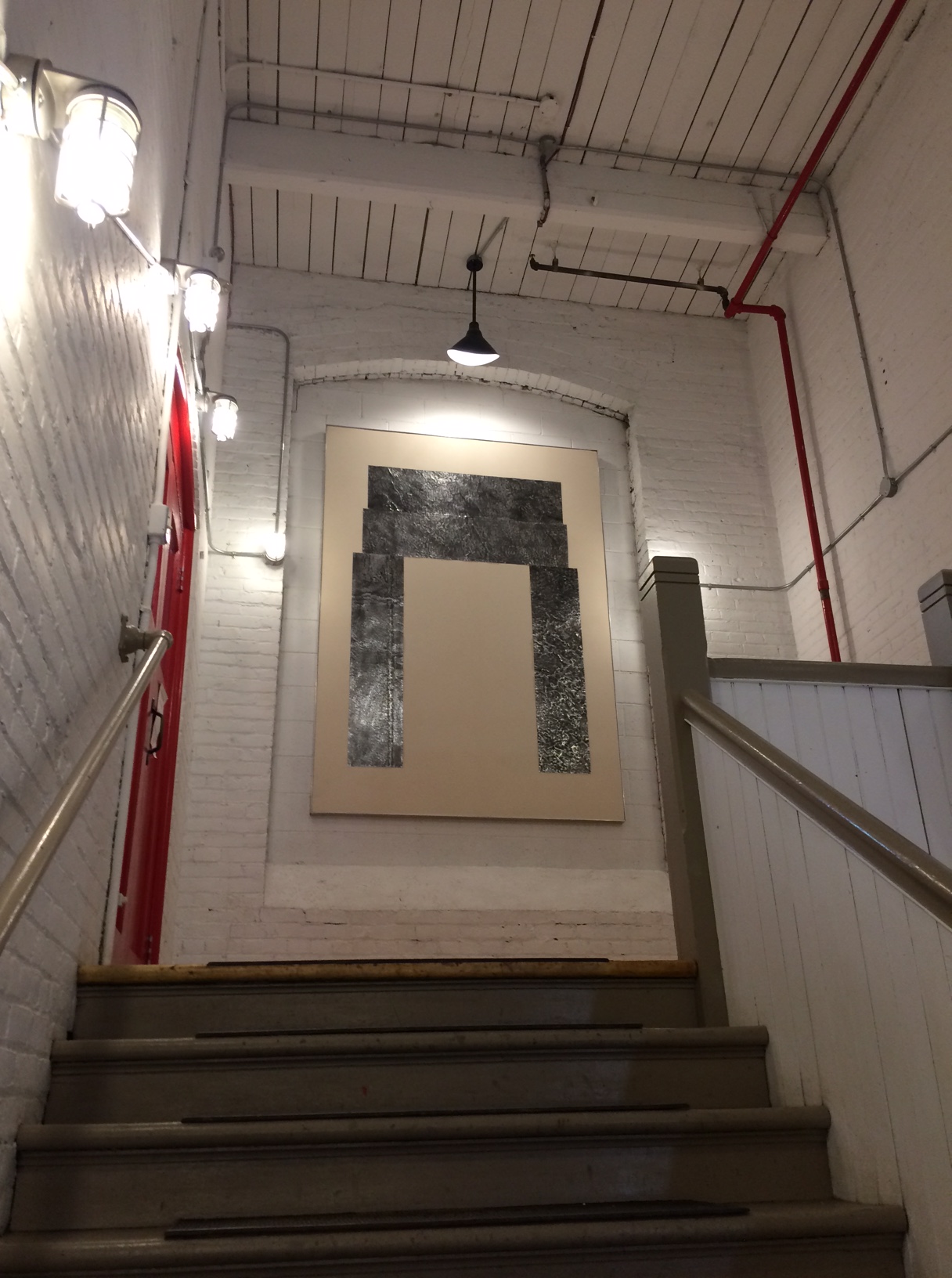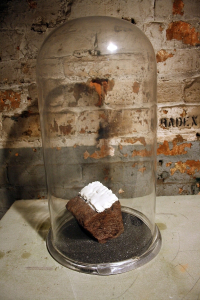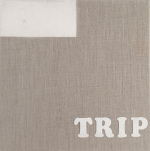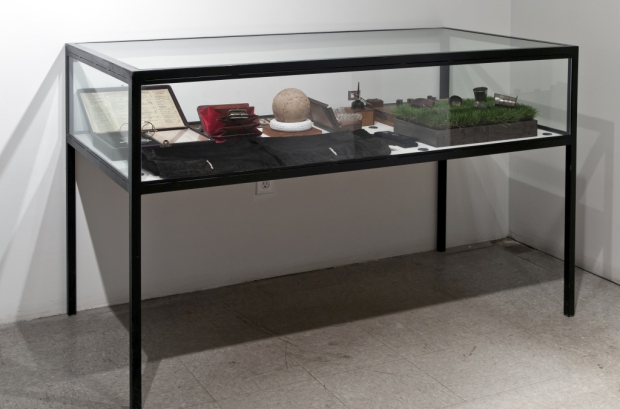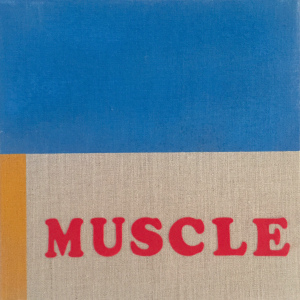From the Files of the Board of Wayne County Road Commissioners,
Detroit, Michigan
Center Line on Pavements
This line was first used by the Wayne County Road Commission in 1911. Mr. Hines conceived of the idea on Huron River Drive while on an inspection trip of some roads. This drive had an 18-foot concrete pavement with a number of sharp curves and ‘S’ turns as it followed rather closely winding Huron River. As he approached one of the curves he noticed a streak of some *white liquid material in about the center of the pavement and on rounding the curve he came upon a wagon loaded with a motor box from one corner of which a small stream of its contents was flowing onto the pavement.*Other files note the liquid as milk from a delivery truck.
At the next meeting of the board of road Commissioners, following this inspection trip, Mr. Hines proposed that a strip of stripe of white paint be placed in the center of pavements at sharp turns, curves and narrow bridges to induce motorists to keep on their side of the road and thereby avoid a repetition of accidents that had taken place at such locations on highways. The suggestion was adopted and such a stripe was first placed at a narrow bridge on Seven Mile Road. The stripe was 4 inches wide, which was first marked off with a snap line and then white lead paint was applied with a hand brush. Later on, a wooden rack or frame with a 4-inch wide slot was used. The painter applied the paint with a hand brush within the slot and moved the rack forward each time he completed the line for the length of the rack.
This was done in a somewhat desultory manner for several or until World War I when traffic on our roads increased tremendously and it was decided to centerline mark long stretches of straight road to divide and safeguard traffic. The aforementioned hand methods were, of course, too slow thus a better way was sought. This was about 1920. A small sled-like affair was devised upon which a man sat holding a spray gun into a 4-inch slot to apply the paint onto the pavement. The sled was pulled by the truck carrying the paint supply tank, compressor, etc. On the bottom of the sled felt was used to keep the line as even as possible. This method worked well until the felt wore off, then the sled slid around making the line crooked. This required frequent application of new felt and trouble was also encountered with the spray gun. The next year (about 1921) a small two-wheeled pushcart with a two-gallon container was used; a trigger released the paint onto a 4-inch brush, which smeared the paint on the pavement. This did not prove too satisfactory and was discontinued due to the line being irregular, for instance when bumps in the pavement were encountered large gobs of paint spilled or oozed out from under the brush.
The following year we made another device, a sort of dolly attached to the rear of a truck. This dolly had a short axle, on one end of which a Ford automobile wheel was placed and on either end a solid wooden wheel of the same size was used and the circumference of which was covered with felt 4 inches wide and 1¼ inches thick. The paint was allowed to flow onto this felt-covered wheel, which in turn applied it to the pavement as it rotated. This machine enabled us to cover the then existing paved country roads in three weeks time. About 5 gallons of paint was used per mile. The only bad part of this method was that the centerline had a feathered edge. This method of application was used until about 1927.
In 1927, still trying to better the line, we made another machine, which had a 4-inch slot and two 4-inch brushes. The paint striking the first brush was spread by the second. This made a good line but used too much paint.
The next year we built another machine using the spray method. The dolly at the back of the truck was mounted between two Ford wire wheels. There were two steel side plates for the spray nozzle to work between and form the width of the line. A bicycle wheel was also used, which attached to and extended several feet ahead of the truck on the driver’s side acting as a guide to the truck driver in keeping in the center of the road. This device was very satisfactory, marking about seven miles of road per hour and using about four and one-half gallons of paint per mile. The paint spray gun road-marking machine in universal use today is on this order, but of course, greatly improved.
Over the years various persons claimed credit for originating this center line stripe but in November, 1936, when the Automobile Club of Michigan was host to the American Automobile association which was meeting in Detroit for its 34th annual convention, Mr. Hines was awarded a special plaque by the B. F. Goodrich company for his outstanding efforts and accomplishments in highway safety, after that company had conducted a national search to determine the originator of the highway center line, which Mr. Hines himself always referred to as the “center line safety stripe”.
BIBLE BIBLE BIBLE BIBLE BIBLE BIBLE BIBLE BIBLE BIBLE BIBLE BIBLE BIBLE BIBLE BIBLE BIBLE BIBLE BIBLE

